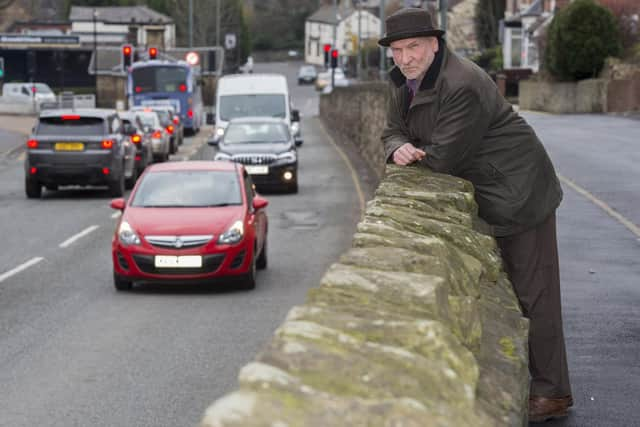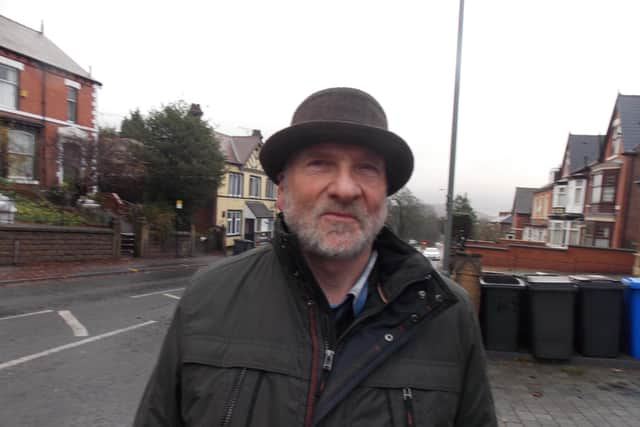Sheffield environmental campaigners express concern on Clean Air Day, as new research finds that 277 schools in the city are located in areas with unhealthy air pollution limits
and live on Freeview channel 276
Burngreave Clean Air Campaign is one of many groups across the UK who are supporting Clean Air Day on Thursday, June 17, and organisers are urging people to speak out after the statistics were revealed by charity Global Action Plan which runs the event.
Graham Jones, the founder of Burngreave Clean Air Campaign, said: “We are concerned that illegal levels of polluted air in Sheffield kill 500 people prematurely each year, or about 45,000 for the UK.
Advertisement
Hide AdAdvertisement
Hide Ad"Worldwide it kills an estimated seven million people a year, far more than HIV, tuberculosis and malaria combined. It’s responsible for one in nine of all fatalities. It affects almost everyone. Over 90 per cent of the world’s population lives in places where air pollution is above World Health Organisation guidelines.


“Air pollution causes tiny particles which can enter not only the bloodstream, but even the cells of the body. It can cross the placenta of pregnant women. It can cause a wide range of diseases including lung disease, heart disease, cancers, diabetes, dementia, infertility.”
The national focus of the Clean Air Day 2021 is children’s health with air pollution being a cause of premature birth, low birth weight, cot death and failure of young brains and lungs to develop properly.
Graham said: “Air pollution affects people in the poorest areas of our towns and even five years ago Black Lives Matter recognised that BAME people were at greater risk from suffering the effects of toxic air in many ways.
Advertisement
Hide AdAdvertisement
Hide Ad“In our cities motor traffic, especially diesel, and woodburning stoves are the main contributors to pollution. To reduce the number of motor vehicles on our local streets, we support improved public transport and organisations such as Better Buses for South Yorkshire which are campaigning to bring our local buses back into public control.


“Covid has given us an opportunity to ensure that real changes are made for the benefit of people and the planet. We especially need to make our voices heard in the coming months.”
The data, which was collected by EarthSense, is claimed to be the most comprehensive and up-to-date sample of air pollution taken from all schools across the UK and is based on data input from a 2019 annual average data set.
It concluded that 7,852 out of all 28,965 UK schools - which equates to over a quarter - are located in areas which are above World Health Organisation (WHO) air pollution limits.
Advertisement
Hide AdAdvertisement
Hide AdIn Sheffield, this was in respect of 277 schools and in the wider Yorkshire and Humber region, 684 schools.


Larissa Lockwood, director of Clean Air at Global Action Plan, said: “The fact that 27 per cent of UK schools are above WHO air pollution limits is extremely alarming. Air pollution is not a fact of life. If we all do our bit, it can be solved with collaborative action and education.
“We have seen the power of Clean Air Day to unite a movement, to bring confidence to talk about the importance of tackling air pollution even in trying times, and to push for change, but it can’t stop there.
“Tools like the Clean Air for Schools Framework are available for free to help any school set up a clean air action plan, but schools cannot do this alone. If we all come together - individuals, schools, businesses, local authorities across the UK to collectively act and seize this moment we can create and support change, for good.”
Advertisement
Hide AdAdvertisement
Hide AdAir quality outside schools was reviewed, as children are said to be particularly vulnerable to its impacts and spend a significant amount of time at school.


The Clean Air Day theme for 2021, “protect our children’s health from air pollution”, highlights the urgency to safeguard children’s health.
It has been argued that this is even more important, as over the past year, many young people saw their freedom, education and mental wellbeing compromised as a result of the pandemic.
Sarah Hannafin, policy advisor at the National Association for Head Teachers, said: “One thing the COVID-19 crisis has shown us is that we can do things differently. As we now begin to try and return to a more normal way of life it's important we don't just automatically take up old habits but try to use this opportunity to find better options, for ourselves and the planet.
Advertisement
Hide AdAdvertisement
Hide Ad“The impact of the pandemic on children has been huge; we need to do everything we can to make sure we safeguard their futures. One vital way of doing that is to ensure they return to a safe, clean and healthy environment where they can learn, play and thrive.”
The campaign is calling for various action points from individuals, schools, businesses, the health sector and local authorities.
From asking people to consider leaving the car at home, encouraging schools to use The Clean Air Schools Framework, asking businesses to assess and address their practices, and raising awareness of air pollution - all are suggested methods that could help contribute to cleaner air.
But Graham Turnbull, of Clean Air Sheffield, said the major problem was not traffic pollution but solid fuel burning, including wood-burning stoves. He added that 12 per cent of air pollution came from all transport, whereas solid fuel burning contributed 40 per cent.
Advertisement
Hide AdAdvertisement
Hide Ad“Most of the concern is misdirected,” he said. The conversation quickly turns to vehicles, dieselgate and cars idling outside schools. But the biggest source of that pollution is sold fuel burning.”
For more information about Clean Air Day, visit here.
For more information about Burngreave Clean Air Campaign or to join, contact: [email protected]